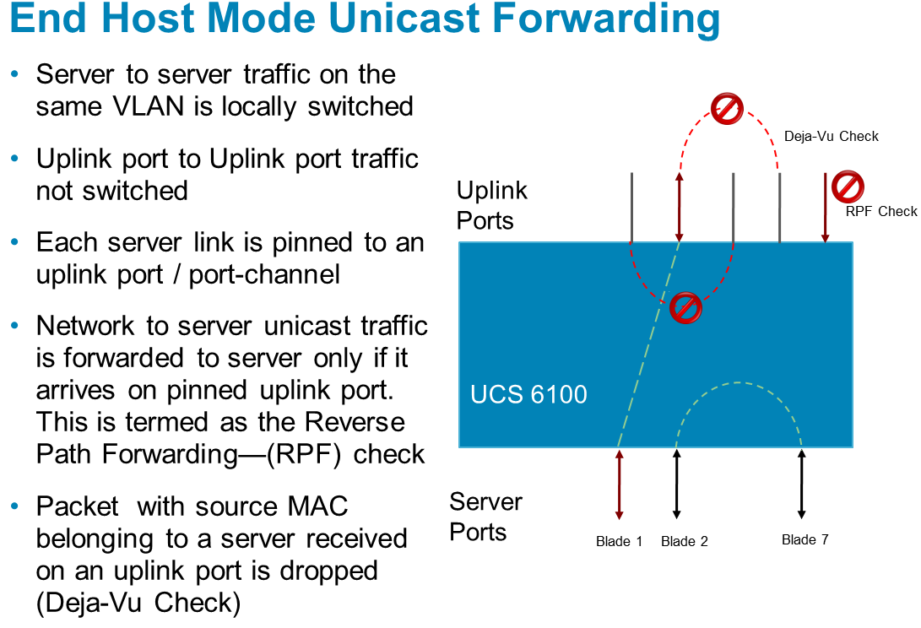Cisco UCS FI End Host Mode vs Switching Mode
There are two primary modes of operation for UCS: UCS switching mode and UCS end host mode:
I- UCS Switching Mode:
In this mode, the UCS Fabric Interconnects (FIs) act as network switches. The FIs provide Layer 2 switching capabilities and perform all the switching tasks for the servers connected to them. The servers are connected to the FIs through the Fabric Extenders (FEXs) or I/O Modules. The FIs act as the single point of management for the entire UCS system, and all the network traffic between the servers and the outside world flows through them.
The advantages of UCS switching mode are that it provides a simplified network architecture, reduces cabling and complexity, and offers better network visibility and management capabilities.
UCS in switching mode is learning MAC on Uplink and run spanning tree like a normal switch.
II- UCS End Host Mode:
In this mode, the UCS FIs behave as regular end-host devices rather than network switches. In this mode, the servers are connected to the network directly and use the network switch for all switching tasks. The UCS FIs appear as just another device on the network, and they don’t perform any switching tasks.
The advantages of UCS end host mode are that it offers more flexibility in terms of network configuration, allows the use of third-party network devices, and enables more advanced network features like ACLs, QoS.
UCS in EHM is not learning MAC on uplinks or running STP, but, no avoid loops, 2 mechanisms were implemented:
- Deja VU
- RPF
The following illustration from Cisco explain it well:

The key differences between UCS switching mode and UCS end host mode are:
Switching Functionality: In UCS switching mode, the UCS FIs act as network switches, whereas, in UCS end host mode, they behave as end-host devices.
Network Architecture: UCS switching mode provides a simplified network architecture with reduced cabling and complexity. In contrast, UCS end host mode offers more flexibility in network configuration and the use of third-party network devices.
Overall, the choice between UCS switching mode and UCS end host mode depends on the specific requirements of the data center environment and the organization’s network architecture preferences.
